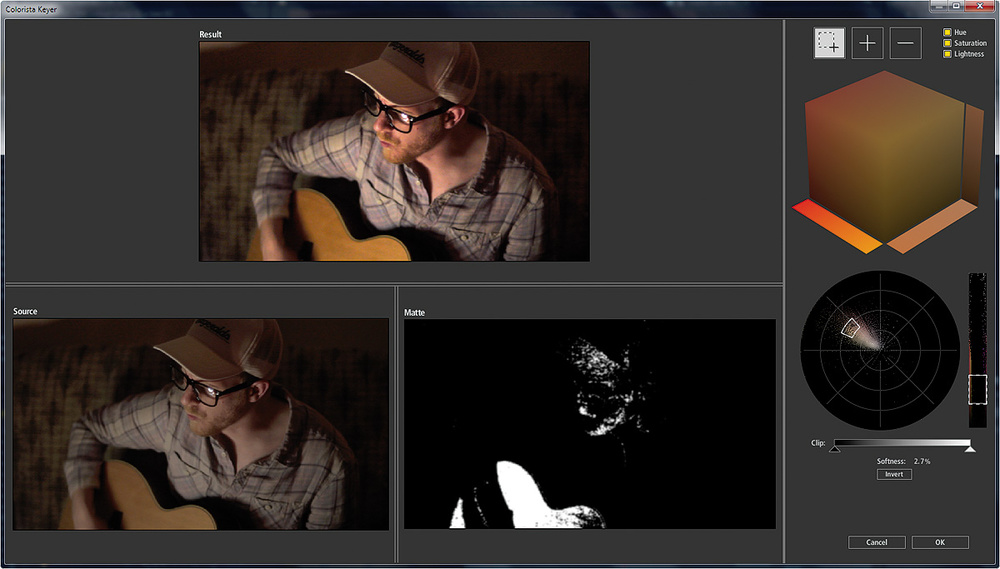
There are Power Masks, which allows you to define rectangular or elliptical mask – your secondary colour correction will then only apply inside or outside this mask. This section has a 3-way corrector control, just as the Primary section does, as well as a handy Pop control which does some interesting micro-contrast adjustments.

Secondary sectionOf course, if you want to mess about with keys, the Secondary section of Colorista II lets you do just that. This is a really cool and quick way of changing colours without messing about with keys. Grab the green dot in the right control and drag it towards the centre of the wheel and the greens in your image get darker – you can drag the dot outside of the wheel to lighten colours. If you grab a green dot in the left control and drag it towards the yellow, all your greens (wait for it!) turn yellow. Each has some coloured dots (green, cyan, blue, purple, magenta, red, orange and yellow.

The left control changes colours, the right luminance. Click on the little calculator icon on the panel and you get editable, numerical values for your adjustments.Įven greater control is afforded by the HSL panel below the 3-way. The rest of the outer part of the wheel is a control for level – just slide it to the lighter portion of the scale to lift the mids, for instance. Now the quadrant to the left of the wheel is an intensity control for that colour tint. If you want more subtle control, drag the coloured rectangle just outside the colour wheel to the warm segment. The centre colour wheels has a movable dot very similar to those in FCP’s built in corrector – if you want the mids to warm up just drag the dot towards the warmer orange/red part of the wheel. I really like the layout of these controls. Below these are the usual colour wheels for Shadow Midtone and Highlight. Primary section screen grabThe Primary section gives you sliders for Exposure, Density and Highlight Recovery.

The three sections have subtly different controls. Primaries are usually used to correct exposure and colour balance from clip to clip in a scene, the Secondary section is for adding special effects (perhaps to turn that boring beige dress into a sexy scarlet gown), and the Master section can be used for an overall ‘look’. There are three main sections, a Primary correction section, Secondary and Master. Probably the best known is Magic Bullet Looks, which is justifiably well regarded, but sometimes a more traditional approach to grading works better, and that’s where Colorista II comes in.Īnyone familiar with Colour (or even FCP’s built in 3 way colour corrector) will recognise the principles of Colorista II. There is really no excuse for it, particularly if you have any of Magic Bullet’s fabulous colour correction plug-ins for FCP. Colorista’s KeyerIf there’s one thing that really makes my blood boil it’s seeing poorly graded programmes on the telly.


 0 kommentar(er)
0 kommentar(er)
